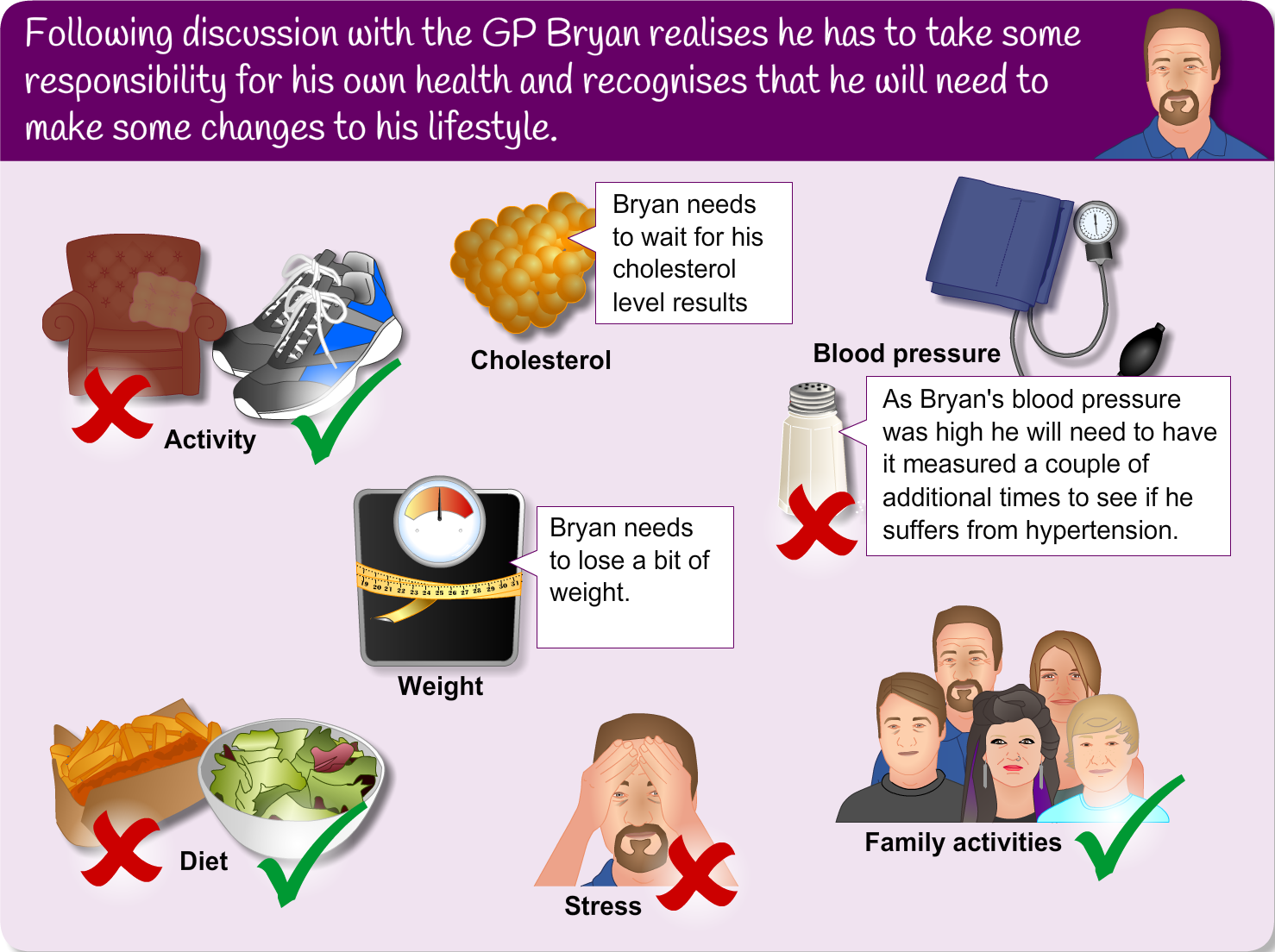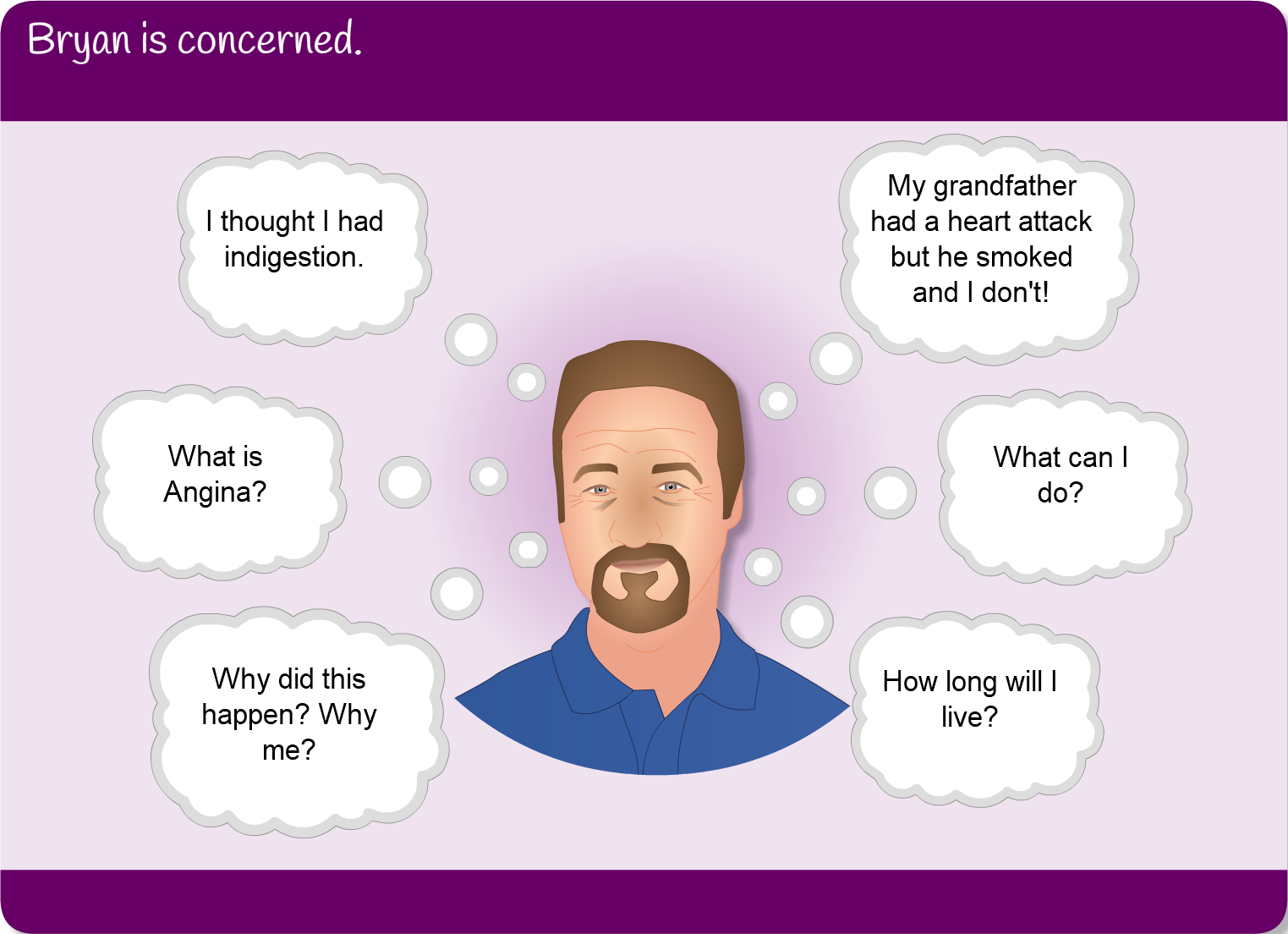
Bryan also needs to understand and discuss the medication he requires, including the management of chest pain. We will discuss this further as the case continues but you can access the chest pain advice within the Additional Information box.
Review the self-management definition as described in the introduction to HEARTe.
Press play on the animation below if it doesn’t start automatically for you, and then move through the slides underneath by < and >.
Bryan is having to adjust to his diagnosis with heart disease, which typically involves experiencing a range of emotions as well as trying to make sense of what has happened. There is more information and examples of this in module 2 and 5.

The GP explains to Bryan that angina is a symptom of coronary artery disease. This could be due to the build up of fatty deposits within his heart arteries leading to a lack of of oxygen that the heart requires. She uses a poster to show how this build up can occur all over the body and Bryan needs to look at reducing his risks. The GP wants to do some more tests to confirm the diagnosis.
Observe the SOCRATES mnemonic during the GP’s consultation with Bryan.
When taking a patient’s clinical history it is important to let the patient tell their story.
Look below to see Bryan’s response:
| Bryan’s response |
| Site |
lower chest, upper abdomen
|
| Onset |
climbing up stairs/rushing to pub
|
| Character |
dull ache
|
| Radiation |
arms sometimes legs |
| Associations |
breathlessness and nausea |
| Time course |
couple of minutes |
| Exacerbating/Relieving factors |
worse after eating big meal/helped by stopping activity |
| Severity |
no mention during medical history |




